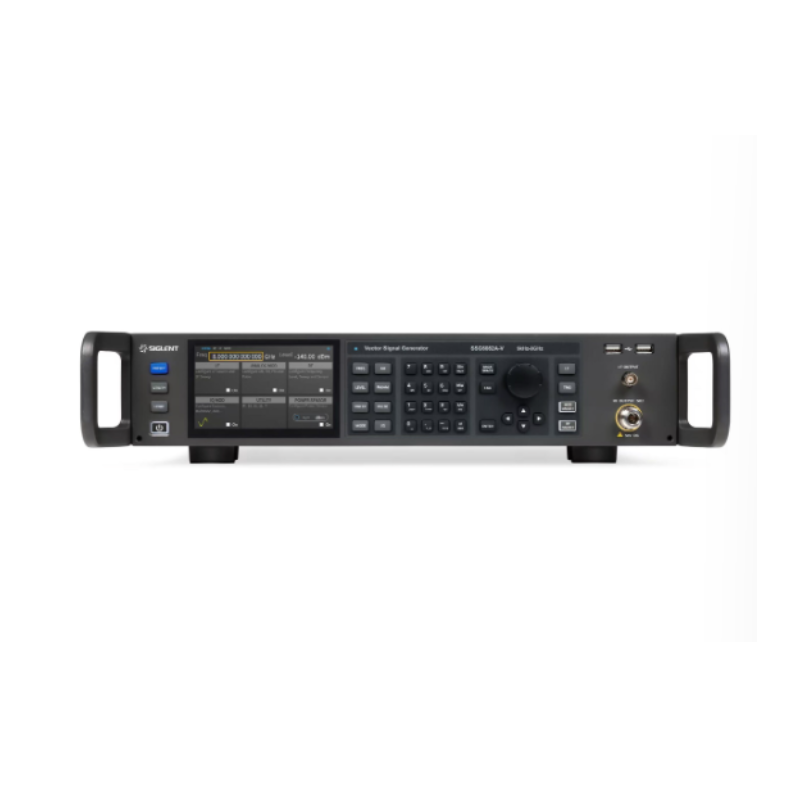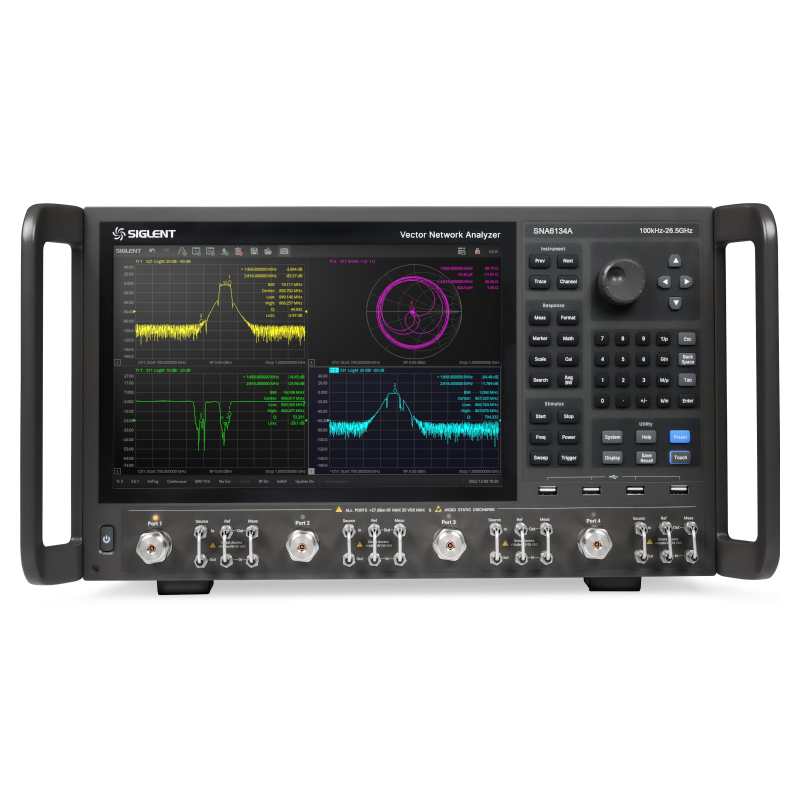
Wideband IQ Emulation and Analysis for RF Design and Debug
July 11, 2025 microwavejournal
Complex signal generation and analysis are critical test functions for RF design. As products adopt more advanced signal types, the requirements for testing transmit and receive subsystems, including interference and modulation analysis, increase. Newer signal types, such as 5G New Radio (NR), Wi-Fi 6 and Wi-Fi 7 standards require higher carrier frequencies, wider bandwidth and higher symbol rates in more complex schemes. Different solutions exist for capturing and simulating these signals for design verification and debugging. Emerging protocols, modulations and channels require the next generation of baseband production and analysis solutions to advance RF design and debug testing.
SIGNAL EMULATION LIMITATIONS AND WIDEBAND SOLUTIONS
Traditional RF signal sources enable signal emulation within a bandwidth of approximately 150 MHz. This bandwidth limitation coincides with a similar symbol rate limit. For standard SSG5000X-V models, the maximum symbol rate is 60 MSymbols/sec. Signal development software, such as SigIQPro, can import, create and transfer signals to the instrument directly, however, these limitations impact the types of signals that can be emulated. For example, Figures 1 and 2 both show a standard 64QAM test signal with pseudo-random data on a 5 GHz carrier at 40 MSymbols/sec. Users can check the error vector magnitude (EVM), which is influenced by various factors, using different signal generators. Figures 1 and 2 have reduced some of these impacts by using the same analyzer to measure both signals. Frequency accuracy, time since calibration and phase noise all impact the EVM of the signal. However, the sample rate and bandwidth of the IQ baseband generator have a significant impact on signal integrity, as shown in Figures 1 and 2. Figure 1 demonstrates this example on the SSG5000X-V model and shows 3.14 percent rms EVM, while Figure 2 demonstrates this example on the SSG6082A-V model and shows 1.75 percent rms EVM.
 |
 |
Figure 1 64QAM with 40 MSa/s on SSG5000X. Figure 2 64QAM with 40 MSa/s on SSG6082A-V.
Across all the specified typical and measured IQ EVM signals, including W-CDMA, LTE, GSM, edge, QAM, QPSK and CDM2000 signals, the SSG6082A-V demonstrates between one- and two-thirds of the error compared to the SSG5000X-V.
Errors caused by speed and bandwidth limitations in the baseband generator have impacts on applications, such as interference, noise and multiband tones and channels. Applications for additive white Gaussian noise are directly limited by the signal bandwidth. The IQ bandwidth is the maximum width of the noise, as the sample rate of the baseband is sufficient to generate at least that limit.
Complex interference signals that require multiple tones or IQ signals in multiple channels require advanced sampling and memory capabilities. For these applications, users must start looking beyond the sampling rate and consider the baseband sample memory. Longer arbitrary playback makes it possible to build longer, more dynamic signals with higher sample rates. For example, the SSG6082A-V is capable of baseband signals with more than 2 billion samples. This is often more than 10x the memory of standard IQ generators. Consequently, users can generate more than 1000x as many tones in a single IQ pattern. Up to 65,536 tones can be generated simultaneously in this way. Figure 3 shows 100 tones at 5 MHz spacing on a 4 GHz carrier.
 |
 |
Figure 3 100 tones at 5 MHz. Figure 4 IQ signals in channels simultaneously.
Wi-Fi interference applications often require standardized active signals in channels to monitor channel switching and throughput behaviors. The combination of bandwidth, symbol rate and memory depth has the added benefit of enabling multiple channels with separate waveforms to be combined into a single pattern, as shown in Figure 4.
Lastly, there are protocols that require wideband modulation. Traditional LTE signals typically use 20 MHz channels. Newer 5G NR channels utilize 100 MHz of bandwidth and 802.11be signals for Wi-Fi 7 use up to 320 MHz. The SSG6082A-V can generate these more complex signals at higher symbol rates in standard modulations, including 1024QAM. These new schemes are designed to improve throughput for data-intensive applications. The combination of bandwidth, symbol rate and complex modulation schemes that have more bits per symbol are the chief methods available for increasing throughput. EVM, bit error rate and data throughput are the resulting metrics for using this bandwidth efficiently.
In summary, wideband generation enables a more complete evaluation of bandwidth use efficiency by enabling custom and high performance signal evaluation with improved accuracy and fidelity in real-world environments.
REAL-TIME ANALYSIS AND DIGITAL DEMODULATION
Similar to the ongoing expansion of capabilities for RF generation, analyzers continue to improve speed and accuracy. This includes expanded memory, measurement fidelity and analysis bandwidth.
One visualization technique for dynamic RF signals is a real-time density view. Real-time views are generated by high speed Fast Fourier Transforms (FFTs) of the time domain samples within a given spectrum. Important considerations here include the 100 percent probability of intercept (POI). This defines the shortest RF pulse that will be measured accurately in power by the analysis mode. POI is impacted by sample rate and the interleaving or overlapping of the FFTs.
Instruments like the SHA862A, as shown in Figures 1 and 2, can generate 110 MHz real-time bandwidth views in addition to the demodulation views displayed. A wider analysis bandwidth, when matched with higher and more accurate sampling, ultimately leads to better evaluation of transmitted signals.
Wider band captures are available using modern, high speed oscilloscopes as the backbone of the analysis system. With up to 8 GHz of near-DC bandwidth, an oscilloscope like the SDS7000A series provides wide bandwidth and fast sampling at 20 billion points per second with 12 bits per sample.
These samples can be used to visualize 1 GHz of bandwidth, as shown in Figure 5, a wideband real-time visualization with a high-resolution oscilloscope view of the channel in the RF space. Digital down-conversion techniques can then be used for additional analysis. This enables the extraction of IQ data from the carrier and the utilization of high speed sampling to demodulate complex, wideband waves.
 |
 |
Figure 5 Wideband real-time visualization with a high-resolution oscilloscope. Figure 6 SigVSA embedded scope RF analysis software.
For example, this 5G NR signal shown in Figure 6 can be analyzed for EVM and bit level accuracy. The digital down-conversion techniques can reduce systemic errors that may otherwise be added by analog conversion techniques. Bit level validation and error vector analysis in both time and spectrum can be shown visually for debugging and failure analysis. Higher-level custom protocol validation tests, for example channel and lane measurements, can then also be added.
Conclusion
Increased sample and symbol rates, memory depth and overall signal fidelity highlight advances in IQ baseband generation and analysis capabilities. These digital advances combine with expanding analysis bandwidth and higher-frequency carriers in RF analog design. This lays the foundation for RF testing using the latest protocols, modulations and channels. Together, these improve RF design and debug by simplifying high-throughput, high signal fidelity emulation and analysis.
Siglent Technologies
Solon, Ohio





